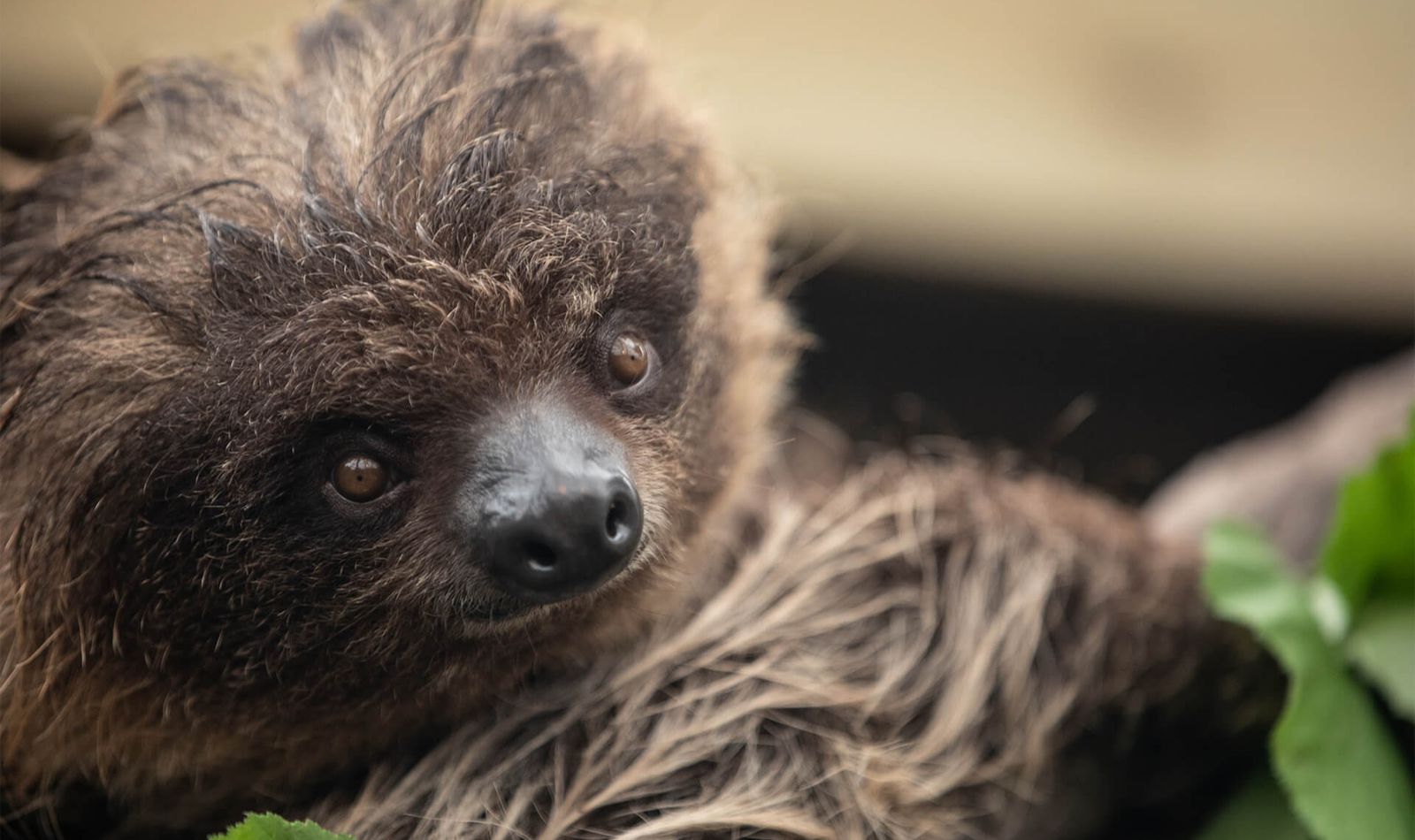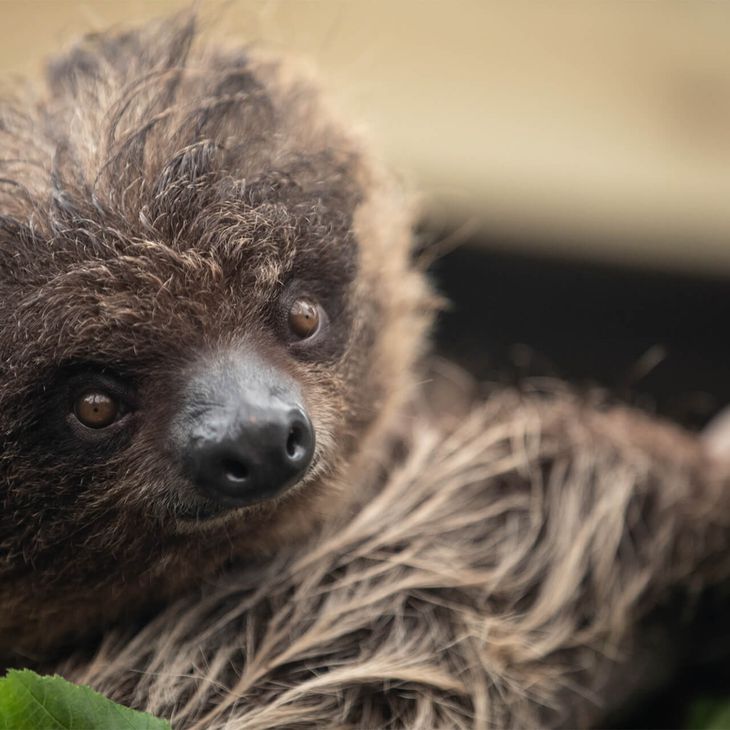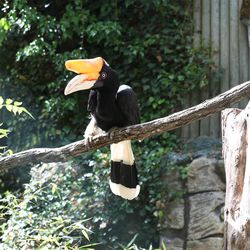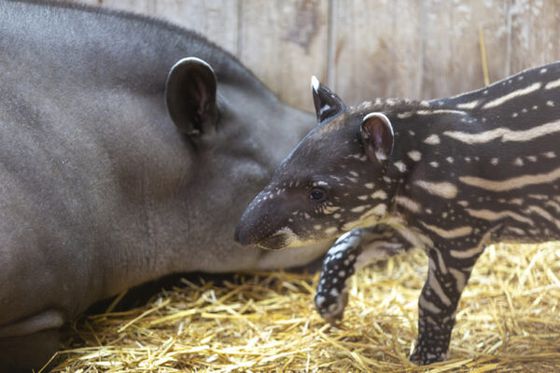« It only moves about 38 metres per day! »
A name that speaks volumes
If you have time, there is no need to rush.
Sometimes a species’ name may seem strange and reveal nothing about the animal, but this is certainly not the case with the sloth! This animal’s legendary slow pace of life is a result of its extremely slow metabolism. It will sleep for up to 15 hours a day and takes a week to fully digest a meal. The rest of the time, the sloth moves very slowly to conserve its energy. Hanging upside down from tree branches, it only moves about 38 metres per day! It will also come down to the ground, where it is much less comfortable, to change trees or to find food.
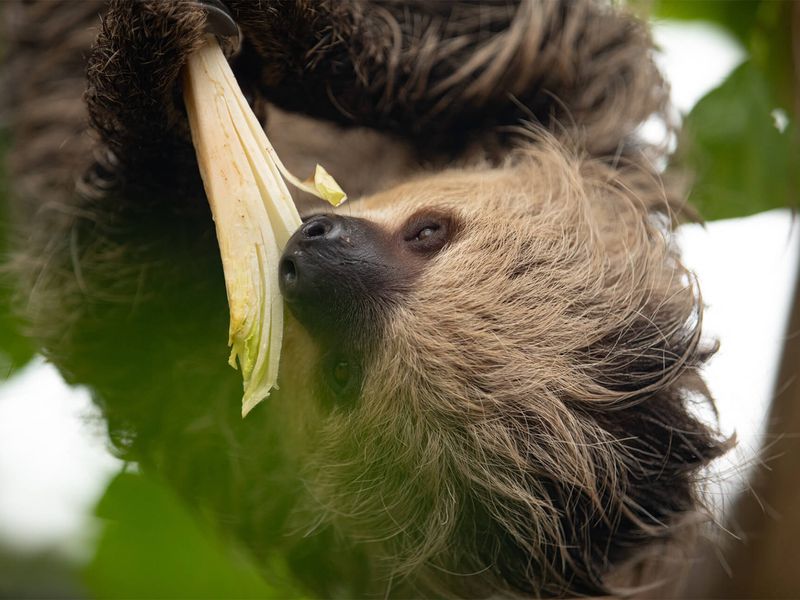
Did you know?
“Clins d’Œil de Beauval”: a sloth in top gear
Better than a yoga session!
This special effects-free video allows you to behold the breath-taking speed of our sloth. Do not attempt these extraordinary acrobatics at home… unless you want to fall asleep.
The Beauval Nature association
For the past 10 years, the Beauval Nature association has joined forces with field workers to support them in their primary mission of species conservation. Beauval works closely with numerous conservation and research programmes around the world to study and protect endangered species. This everyday action takes place in order to protect our biodiversity.
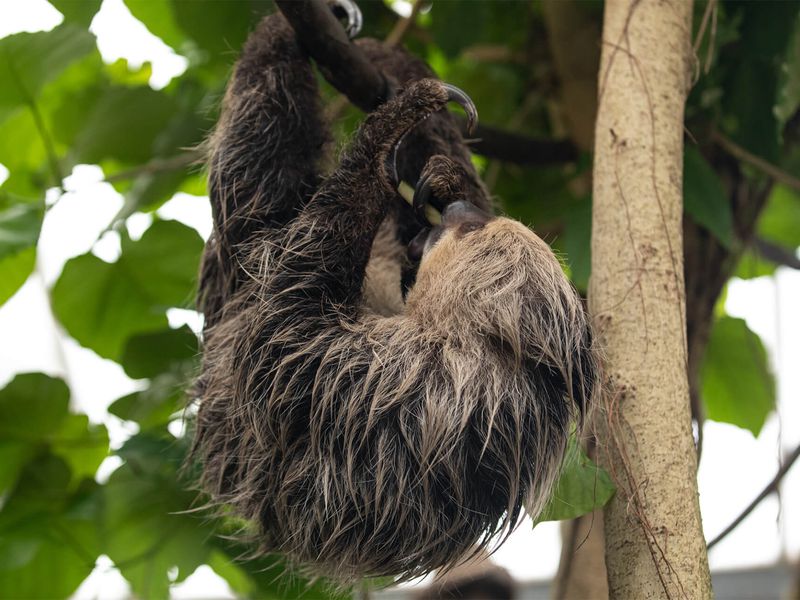
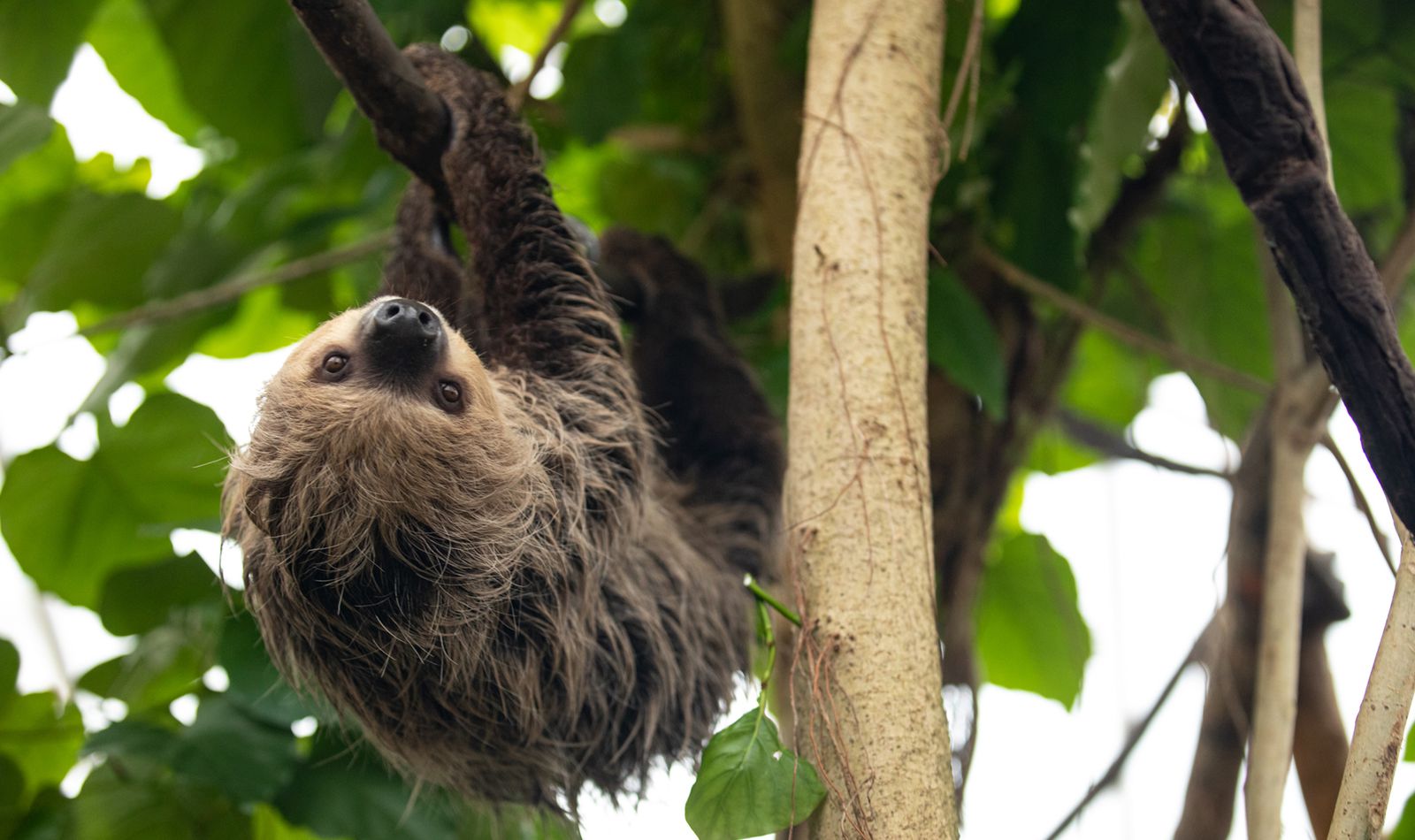

Sponsor our animals
Establish a strong bond with your favourite animal whilst supporting conservation programmes through the Beauval Nature association!
Least concern
Learn more about the species
-
OmnivoreDiet
-
10 monthsGestation period
-
1 youngLitter size
-
Tropical forestsHabitat
A champion of camouflage
It’s always the quiet ones!
What noise does a sloth make?

Take full advantage of the experience thanks to our mobile application!
Find out more
